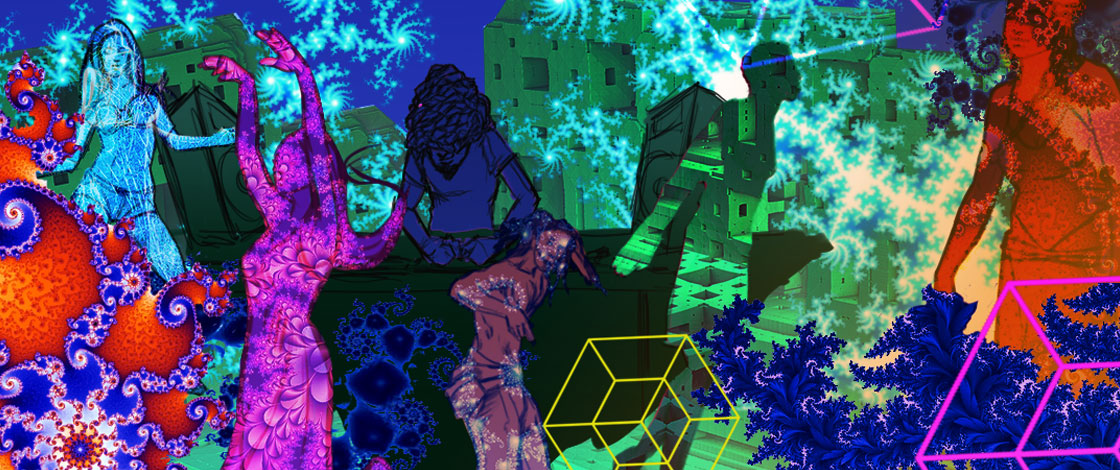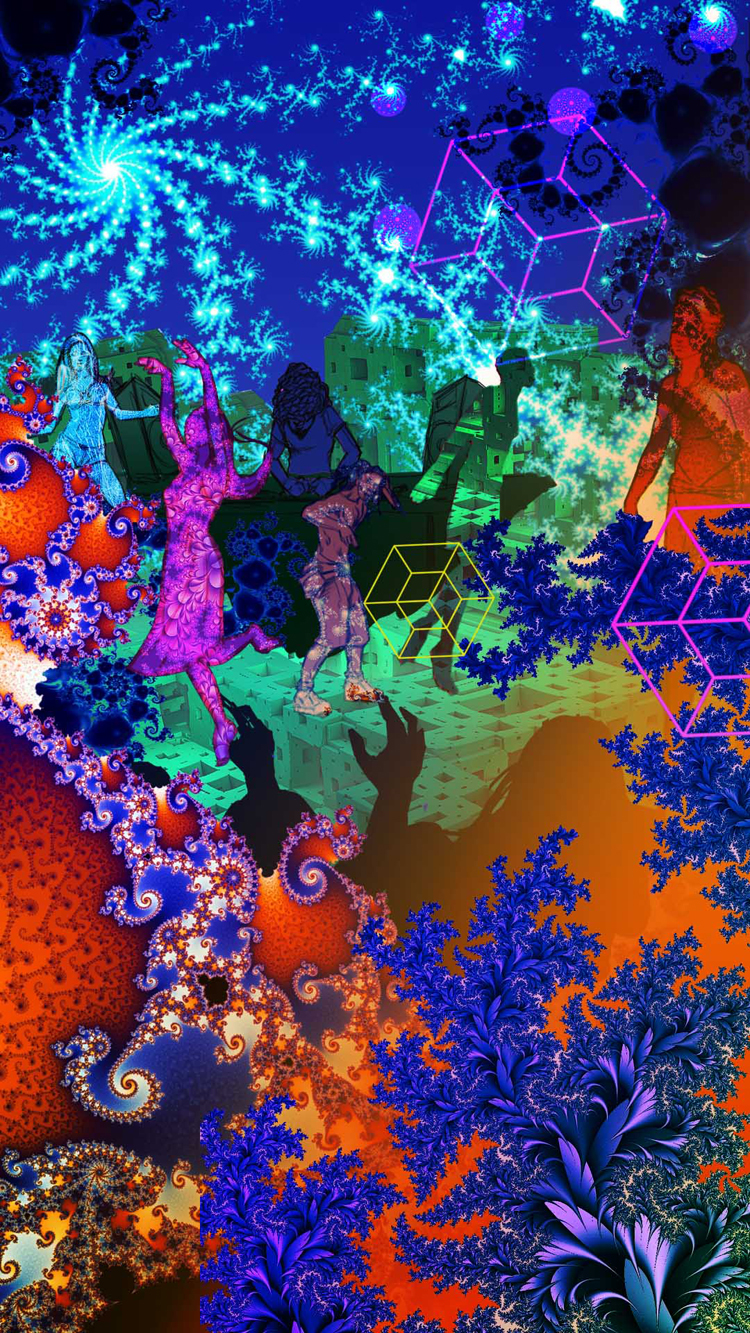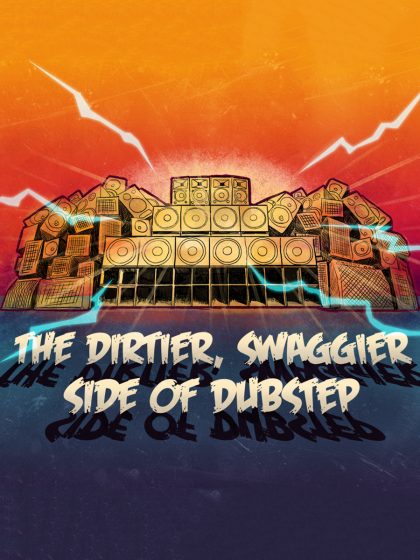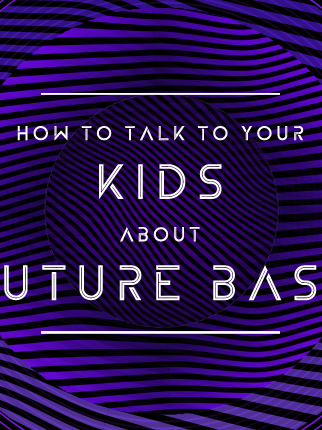How to Talk to Your Kids About Psytrance

You’ve thought about it for a while. Euphoric trance just isn’t quite, well, euphoric enough anymore. You want something a little more unhinged. A little more feral. A little bit outside the bounds of the poppier side of this extremely uptempo strain of techno. So, maybe you’re getting curious about psytrance but, like, don’t know where to get started?
Trance as a whole has been, in some ways, wildly underestimated by pop culture at large since its ‘90s heyday. However, for a lot of reasons, trance is still going extremely strong right now. It hasn’t gone away as much as mainstream interest has waxed and waned. Arguably, the same can be said for psytrance. It is a hardcore scene that is distinctly and unabashedly out there. It’s a bit cultish, and that’s not necessarily a slight.
Psytrance was born out of the Goa trance scene and general aesthetic. Goa is a Western state in India, much of it running along a beautiful beach coastline, and the eponymous “Goa” tag is thrown around for the sort of alien trance music that became popular in the late ‘80s and ‘90s. Psytrance evolved out of Goa in the ‘00s as a particularly trippy spin on the original.
Goa was like the East’s version of Ibiza—a magnet for hippies and seekers of vision quests alike—for a while before techno entered the equation. But when what became known as Goa trance started to take hold in the ‘90s, the marriage between the setting and the sound was complete. This was aggressively out-there forest music for the truest of true spirits.
“Psytrance is a subset of that subset, like a fringe of a fringe. But it’s a very welcoming fringe.”
The Goa sound was fast, of course, but also spiritual, trippy, and tribal. It was in many ways like the more earnest version of IDM. When psytrance first emerged, the terms “psytrance” and “Goa” were sometimes used interchangeably. But you could argue that Goa has a stronger influence from Eastern melodies and that psytrance is often less melodic and has less classically harmonious sound design.

The “trance” in psytrance is that pulsing, hypnotic trance fugue state the music is trying to elicit. It’s trance, so it’s fast, intense music. We’re talking anywhere from 140–170 BPM here. The “psy” comes from “psychedelic”—but not in the way that psych rock or meditative music is psychedelic. It’s more tribal. More cacophonous. It’s music for cyber hippies, essentially. It’s usually not someone’s first dance music genre, but often, fans arrive via other, more accessible gateways.
Like any other good genre, psytrance has splintered off into several subphyla of its own: full on, psychill, darkpsy and psycore (two heavy/demented strains that often overlap), hi-tech (160-BPM minimum, also very similar to darkpsy and psycore), progressive (a blend of psytrance and prog house), suomi (the “Finnish sound”), psybient (the chilled-out son of psytrance and illbient, of all things), and psybreaks.
Beyond the music, there’s this entire psytrance culture, in which you will find tesseract and fractal art. You will find crystals, dreads, drug rugs, glowstringing, furries, mystics, and people who generally like camping and nature. The psytrance scene seems geared for misfits who like to party to intense music in the woods or on the beach. Sure, there are many psytrance parties in towns and cities, but it seems like the ideal way to appreciate it is as far away from an urban area as possible.
It’s impossible to talk about any mutation of trance without mentioning that trance has somewhat of a stigma both within electronic music and just generally within culture. Psytrance is a subset of that subset, like a fringe of a fringe. But it’s a very welcoming fringe.
“Psytrance really is a counter-culture in the truest sense,” Clive Martin once wrote for Vice. “The music is harsh, the clothes are weird, the drugs are strong, the best parties are illegal. This isn’t a scene you can enter half-heartedly.” Similarly, FACT has called the whole scene an “admirably unpretentious world full of unbridled psychedelica.” I think what they’re both getting at is that psytrance is not for people who give a shit about whether others think they’re cool or not, which is refreshing.
While there are some examples of the style or proto versions earlier in the decade, it really picked up steam and coagulated in late ‘90s. Many of the scene’s historians cite the UK’s Dragonfly Records as the first pure psychedelic trance label, and it became the hub for the London psytrance scene. Ever since, the UK and London in particular have held it down, as they do with so many electronic music subgenres.
Where else can you hear psytrance? Well, of course, at Insomniac festivals like Dreamstate, the largest and most immersive event of its kind. You can find it at events like Burning Man and other hippie-friendly West Coast events. It’s found in Israel and parts of Europe—like Hungary, the UK and Ibiza—and there’s a big following in Australia as well. Australia is known for its bush doof scene, which is a DIY rave scene out in the middle of nowhere. Here’s a snarky report on the doof scene:
Here’s a more earnest documentary, PsyTrance: A Way of Life, which gives some first-person musings from the scene’s most seasoned (and cosmic) veterans—especially on how it relates to our primal, tribal sense of music as a cultural activity to perform around the campfire.
Some of the biggest psytrance artists and DJs are folks like Israeli duo Infected Mushroom and Israeli DJ/producer Astrix. You’ve also got Barakuda of L.A.’s PsyTribe crew, Avalon from London, old-school cats like Raja Ram and Goa Gil, Suparna, Neelix, Bliss, and on and on. More mainstream acts, like Carnage & Timmy Trumpet and Armin van Buuren & Vini Vici, are also dipping their toes in psytrance and exposing it to wide audiences.
Of course, there’s a community on reddit and other such boards, a huge section on Beatport, and plenty of options on streaming services, if you want to plug in that way. But we recommend going to a proper psytrance festival if you want the full experience.
The psytrance scene seems to be in quite a healthy place internationally, radicalizing new listeners every day. It’s not for everyone, but if you’re of the cosmic, psychedelic, or otherwise adventurous mindset, psytrance may be just what you’ve been missing.





